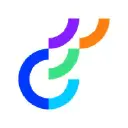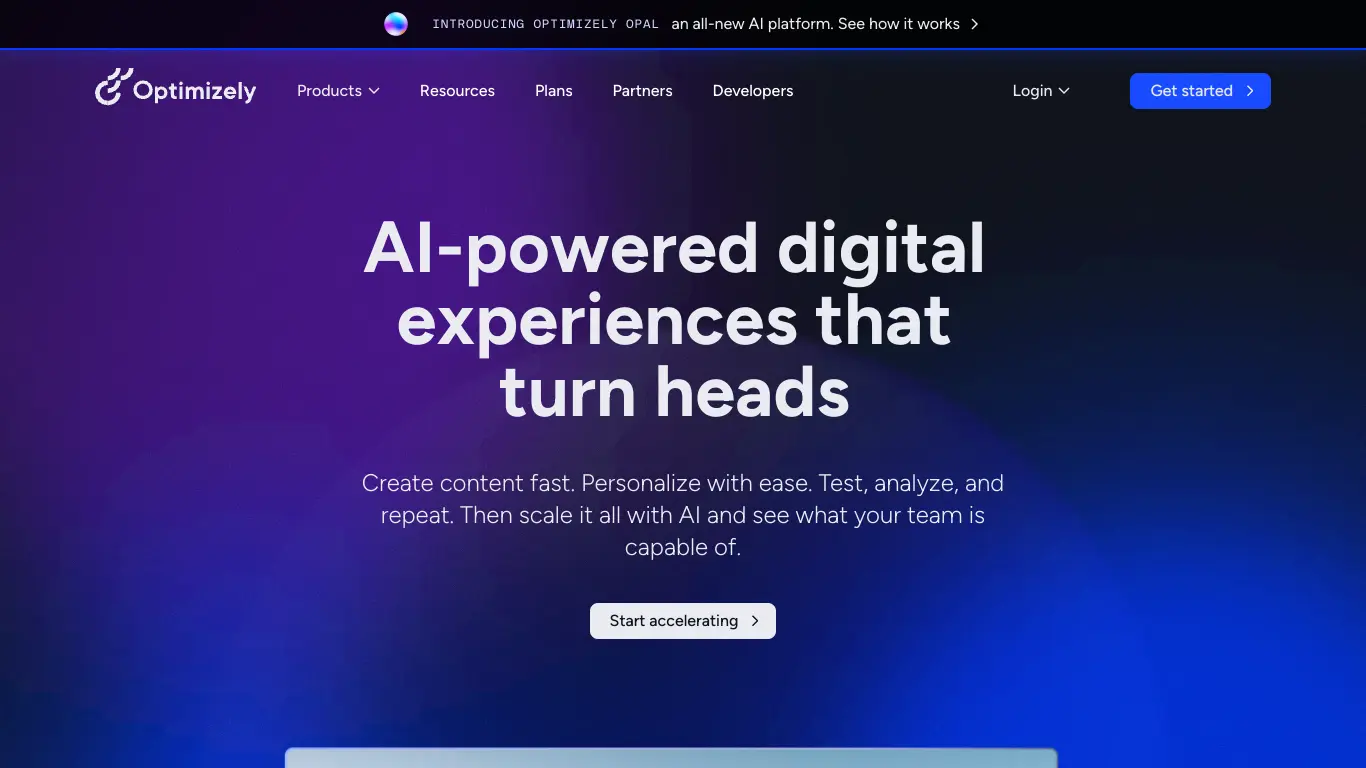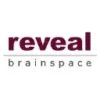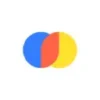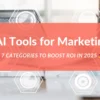Optimizely helps businesses create data-driven digital experiences through A/B testing, personalization, and feature flags.
Introduction to Optimizely
Are you struggling to make data-driven decisions for your digital experiences? Finding it challenging to know which website design converts better or which content resonates with your audience? If you’ve been relying on gut feelings rather than concrete evidence to shape your digital strategy, you’re likely leaving money on the table. Many businesses face this exact challenge, which is why tools like Optimizely have become essential in the modern digital landscape.
What is Optimizely and its Purpose?
Optimizely is a leading experimentation platform that helps businesses create and optimize digital experiences through data-driven decision making. Founded in 2010, Optimizely has evolved from a simple A/B testing tool into a comprehensive digital experience platform (DXP) that enables companies to experiment, personalize, and optimize their websites, mobile apps, and connected devices.
At its core, Optimizely’s purpose is to eliminate guesswork from digital strategy by providing robust tools for testing variations, analyzing user behavior, and implementing changes based on statistically significant results. The platform allows businesses to create hypothesis-driven experiments and measure their impact on key metrics such as conversion rates, engagement, and revenue.
Optimizely’s mission is to help companies deliver exceptional experiences that drive business growth through the power of experimentation and optimization. By making it easier to test and learn from real user data, Optimizely enables businesses to continuously improve their digital touchpoints.
Who is Optimizely Designed For?
Optimizely caters to a diverse range of businesses and professionals, including:
- Enterprise Organizations: Large companies looking to optimize customer experiences across multiple channels and touchpoints
- Marketing Teams: Marketers seeking to improve campaign performance and conversion rates
- Product Managers: Teams looking to validate product features and design choices before full deployment
- E-commerce Businesses: Online retailers wanting to optimize checkout flows and product pages
- Content Teams: Publishers and content creators aiming to optimize content strategy and engagement
- Developers: Technical teams implementing and maintaining experimentation infrastructure
The platform is particularly valuable for data-driven organizations that prioritize continuous improvement and evidence-based decision making. While companies of all sizes can benefit from experimentation, Optimizely’s comprehensive feature set and enterprise-grade capabilities make it especially suitable for mid-market to enterprise-level businesses with significant digital traffic.
Getting Started with Optimizely: How to Use It
Getting started with Optimizely involves several key steps:
- Sign up for an account: Visit Optimizely’s website and choose a plan that fits your business needs.
- Implementation: Add Optimizely’s snippet to your website or integrate it with your mobile app. This typically involves adding a JavaScript snippet to your site’s code or implementing the Optimizely SDK in your mobile application.
- Create your first experiment:
- Define your hypothesis (what you want to test and why)
- Set up variations (different versions of your page or feature)
- Configure targeting (who should see your experiment)
- Select metrics (what success looks like)
- Launch and monitor: Start your experiment and monitor results through Optimizely’s dashboard. The platform will collect data and perform statistical analysis to determine which variation performs better.
- Analyze and implement: Once your experiment reaches statistical significance, review the results and implement the winning variation.
For example, if you want to test whether a new call-to-action button increases conversions:
Hypothesis: Changing our CTA button from "Learn More" to "Start Your Free Trial" will increase sign-up conversions.
Variation A: Original button "Learn More"
Variation B: New button "Start Your Free Trial"
Metric: Sign-up conversion rate
Target audience: All website visitors
Optimizely makes this process intuitive with its visual editor that allows you to create variations without coding knowledge, though more complex experiments may require developer assistance.
Optimizely’s Key Features and Benefits
Core Functionalities of Optimizely
Optimizely’s platform is built around several core functionalities that power its experimentation and optimization capabilities:
- A/B Testing: Create controlled experiments to compare different versions of web pages, features, or experiences. Optimizely’s statistical engine ensures reliable results and helps prevent false positives.
- Multivariate Testing: Test multiple variables simultaneously to understand how different elements interact with each other and affect user behavior.
- Personalization: Deliver tailored experiences to different user segments based on behavior, demographics, or other attributes. This allows for highly relevant content that drives engagement and conversions.
- Feature Flags: Safely roll out new features to specific user segments before full deployment, minimizing risk and allowing for gradual implementation.
- Content Management System (CMS): Create, manage, and optimize content across channels through Optimizely’s content platform (formerly Episerver).
- Digital Commerce: Build and optimize e-commerce experiences with built-in tools for product recommendations, cart optimization, and checkout flow testing.
- Analytics and Reporting: Gain insights from experiment results with detailed analytics dashboards that show performance across segments and metrics.
- Program Management: Organize and prioritize experiments with experiment roadmaps, collaboration tools, and implementation workflows.
Advantages of Using Optimizely
The benefits of implementing Optimizely as your experimentation and optimization platform include:
- Data-Driven Decision Making: Replace opinions and assumptions with concrete evidence, leading to better business outcomes.
- Reduced Risk: Test ideas before full implementation to avoid costly mistakes and ensure positive impact.
- Increased Conversion Rates: Systematic testing and optimization typically lead to significant improvements in key conversion metrics.
- Personalized User Experiences: Deliver tailored content that resonates with different audience segments, improving engagement and satisfaction.
- Faster Innovation: Speed up the learning process by quickly validating or disproving hypotheses about what works for your audience.
- Competitive Advantage: Stay ahead of competitors by continuously improving your digital experiences based on real user data.
- ROI Measurement: Clearly demonstrate the business impact of optimization efforts through Optimizely’s analytics and reporting.
One Optimizely customer reported a 60% increase in conversion rates after implementing a systematic A/B testing program, while another achieved a 32% lift in revenue per visitor through personalized product recommendations.
Main Use Cases and Applications
Optimizely can be applied across various business functions and objectives:
| Use Case | Application | Example |
|---|---|---|
| Conversion Rate Optimization | Test different page layouts, CTAs, and messaging to increase conversion rates | Testing different checkout flows to reduce cart abandonment |
| User Experience Improvement | Optimize navigation, forms, and interactive elements for better usability | Simplifying a registration form from 10 fields to 5 fields |
| Content Optimization | Test different headlines, images, and content formats to drive engagement | Comparing long-form vs. short-form blog content performance |
| Product Feature Validation | Test new features with a subset of users before full rollout | Gradually rolling out a new account dashboard to 10%, then 50%, then 100% of users |
| Pricing Optimization | Test different pricing models, discounts, and presentation | Testing “Free shipping over $50” vs. “10% off orders over $50” |
| Mobile App Optimization | Improve mobile app experiences and conversion flows | Testing different onboarding sequences for a mobile app |
| Personalization | Deliver tailored experiences based on user behavior and preferences | Showing different homepage content to returning vs. new visitors |
These use cases demonstrate Optimizely’s versatility across marketing, product, and content teams, making it a valuable tool for any organization focused on improving digital experiences.
Exploring Optimizely’s Platform and Interface
User Interface and User Experience
Optimizely’s interface is designed to balance power and usability, making sophisticated experimentation accessible to users of varying technical expertise.
Dashboard and Navigation:
The platform features an intuitive dashboard that provides an overview of all running experiments, their status, and key performance indicators. The navigation is logically structured around the experimentation workflow:
- Experiments (for managing A/B tests)
- Personalization (for targeting specific audiences)
- Feature Flags (for controlled feature rollouts)
- Results (for analyzing experiment performance)
- Audiences (for defining user segments)
Visual Editor:
One of Optimizely’s standout features is its visual editor, which allows users to create experiment variations without writing code. Users can:
- Drag and drop elements
- Edit text and images
- Hide or show components
- Rearrange page sections
For more complex modifications, Optimizely also provides a code editor that gives advanced users direct access to HTML, CSS, and JavaScript.
Results Interface:
The results dashboard presents experiment data in an accessible format with:
- Clear visualizations of conversion rates and lift
- Statistical significance indicators
- Segment breakdown analysis
- Confidence intervals and p-values for statistical rigor
Learning Curve:
While Optimizely’s basic functions are relatively easy to master, the platform’s depth means there’s a moderate learning curve for utilizing its full capabilities. Most users report becoming comfortable with core functionality within a few weeks of regular use.
Platform Accessibility
Optimizely offers multiple ways to access and interact with the platform:
Web-Based Interface:
The primary access point is Optimizely’s web application, which works across modern browsers and requires no installation.
Mobile Accessibility:
While Optimizely’s management interface is primarily designed for desktop use, the results dashboard is responsive and can be accessed on mobile devices for on-the-go monitoring.
API Access:
For organizations looking to integrate Optimizely with their tech stack, the platform offers comprehensive REST APIs that enable:
- Programmatic experiment creation
- Results extraction for custom dashboards
- Integration with third-party analytics tools
- Automation of experimentation workflows
SDKs for Developers:
Optimizely provides SDKs for various programming languages including:
- JavaScript
- Python
- Java
- Ruby
- PHP
- Swift (iOS)
- Kotlin (Android)
These SDKs enable development teams to implement server-side testing, feature flags, and more advanced implementation scenarios.
Integrations:
The platform connects with popular marketing and analytics tools including:
- Google Analytics
- Adobe Analytics
- Salesforce
- Segment
- HubSpot
- Jira
- Slack (for experiment notifications)
These integrations allow teams to incorporate experimentation into their existing workflows and data ecosystems, making Optimizely a flexible addition to the modern marketing technology stack.
Optimizely Pricing and Plans
Subscription Options
Optimizely offers several product lines, each with its own pricing structure:
Optimizely Web Experimentation:
- Focused on website testing and optimization
- Tiered pricing based on monthly visitors and features
Optimizely Feature Experimentation:
- Centered on feature flags and server-side testing
- Pricing based on monthly events tracked
Optimizely Full Stack:
- Comprehensive platform combining web, server-side testing, and feature flags
- Enterprise pricing with custom quotes
Optimizely Content Management System (CMS):
- Previously known as Episerver
- Enterprise pricing based on implementation scope
Optimizely Digital Experience Platform (DXP):
- All-in-one solution combining experimentation, content, and commerce
- Enterprise pricing with annual contracts
While Optimizely doesn’t publish specific pricing on their website, industry reports suggest that:
- Web Experimentation starts around $50,000/year for mid-market implementations
- Full enterprise implementations of the DXP can range from $100,000 to $500,000+ annually
- Implementation and services costs are additional
Optimizely positions itself as a premium enterprise solution, with pricing that reflects its comprehensive feature set and scalability.
Free vs. Paid Features
Free Options:
Optimizely offers limited free resources rather than a true free tier:
- Optimizely Rollouts: A free feature flagging system with limited functionality
- Free trials: Available for certain products upon request
- Documentation and learning resources: Freely available on their website
Paid Features by Tier:
While specific tiers vary by product line, here’s a general breakdown of features that typically require paid plans:
| Basic/Growth Plans | Mid-Market Plans | Enterprise Plans |
|---|---|---|
| Standard A/B testing | Multivariate testing | Cross-channel experimentation |
| Visual editor | Server-side testing | Advanced personalization |
| Basic audience targeting | Custom integrations | Dedicated success managers |
| Basic analytics | API access | SLA guarantees |
| Limited traffic capacity | Enhanced security | Customer success services |
| Email support | Phone support | Implementation services |
| Advanced analytics | Custom onboarding | |
| More monthly visitors | Unlimited traffic options |
Optimizely requires contacting their sales team for a custom quote based on your specific needs, traffic volume, and implementation requirements. This enterprise sales approach allows them to tailor solutions to each client’s specific situation but may make the platform less accessible to smaller organizations with limited budgets.
Optimizely Reviews and User Feedback
Pros and Cons of Optimizely
Based on analysis of user reviews across G2, Capterra, and TrustRadius, here’s a balanced assessment of Optimizely’s strengths and weaknesses:
Pros:
✅ Robust Statistical Engine: Optimizely’s Stats Engine provides reliable results with proper statistical significance, reducing the likelihood of false positives.
✅ User-Friendly Interface: The visual editor makes it easy to create experiments without coding knowledge, opening A/B testing to non-technical team members.
✅ Enterprise-Grade Capabilities: The platform scales well for large organizations with complex needs and high traffic volumes.
✅ Comprehensive Feature Set: From basic A/B testing to advanced personalization and feature flags, Optimizely covers the entire experimentation spectrum.
✅ Strong Integration Ecosystem: Connects well with analytics tools, marketing platforms, and development environments.
✅ Quality Technical Support: Enterprise customers frequently praise Optimizely’s responsive and knowledgeable support team.
Cons:
❌ Premium Pricing: Optimizely is significantly more expensive than many competitors, putting it out of reach for smaller organizations.
❌ Learning Curve: While basic functions are accessible, mastering the full platform requires significant time investment.
❌ Implementation Complexity: Setting up advanced features often requires developer resources and technical expertise.
❌ Performance Impact: Improperly implemented tests can impact page load times, though this has improved in recent versions.
❌ Limited Free Tier: Unlike some competitors, Optimizely doesn’t offer a true free version for smaller organizations or beginners.
❌ Resource Intensive: Getting maximum value requires dedicated personnel to manage the experimentation program.
User Testimonials and Opinions
Users across various industries have shared their experiences with Optimizely:
“Optimizely has transformed how we approach product development. Instead of endless debates, we just test it and let the data decide. We’ve seen a 23% increase in conversion rates since implementing their platform.”
– Marketing Director at a mid-sized e-commerce company
“The visual editor is a game-changer for our team. Our non-technical marketers can now set up tests without waiting for developer resources. However, the price point is steep, and we sometimes struggle to justify the ROI.”
– Digital Optimization Manager at a B2B SaaS company
“While Optimizely is powerful, we found the onboarding process challenging. It took several months to fully integrate it into our workflow, but now that it’s established, it’s become essential to our growth strategy.”
– Product Manager at a financial services firm
According to aggregated review data:
- Average Rating: 4.3/5 across major review platforms
- Likelihood to Recommend: 8.5/10
- Ease of Use: 4.0/5
- Customer Support: 4.2/5
- Value for Money: 3.7/5 (lowest scoring category)
These metrics suggest that while users generally appreciate Optimizely’s capabilities and support, they have reservations about its cost-effectiveness, particularly for smaller organizations with limited experimentation needs.
Optimizely Company and Background Information
About the Company Behind Optimizely
Optimizely was founded in 2010 by Dan Siroker and Pete Koomen, who had previously worked at Google. The company’s origin story is tied to the 2008 Obama presidential campaign, where Siroker served as Director of Analytics and noted the power of A/B testing in optimizing donation conversions.
Company Timeline:
- 2010: Founded as an A/B testing platform
- 2013: Raised $28 million in Series A funding
- 2014: Expanded to include mobile app testing
- 2015: Launched Personalization product
- 2016: Introduced Optimizely X platform
- 2017: Shifted focus to enterprise market
- 2019: Launched Optimizely Full Stack
- 2020: Acquired by Episerver, a leading digital experience platform
- 2021: Combined entity rebranded as Optimizely
- 2022: Launch of Optimizely Data Platform
Leadership and Corporate Structure:
Following the acquisition by Episerver in 2020, the combined company operates under the Optimizely brand, led by CEO Alex Atzberger. The company maintains headquarters in New York City with offices in multiple global locations including Stockholm, London, Berlin, and Sydney.
Company Size and Reach:
Optimizely has grown significantly from its startup roots:
- 900+ employees worldwide
- 9,000+ customers including Fortune 100 companies
- Presence in 22 countries
- Processing billions of events daily
Notable Clients:
Optimizely serves numerous high-profile clients across industries, including:
- IBM
- Microsoft
- eBay
- Uber
- The Wall Street Journal
- Atlassian
- Blue Apron
- Gap
- Visa
Corporate Vision:
Optimizely positions itself as the “Digital Experience Platform” company, with a mission to help businesses unlock their digital potential through experimentation, content management, and commerce optimization. The company emphasizes the importance of data-driven decision making and continues to expand beyond its A/B testing roots into a comprehensive digital experience suite.
Funding and Financial Status:
Prior to the Episerver acquisition, Optimizely had raised approximately $200 million in venture funding from investors including Benchmark Capital, Index Ventures, and Andreessen Horowitz. The acquisition by Episerver (backed by private equity firm Insight Partners) was reportedly valued at around $1.1 billion, making it one of the largest exits in the optimization and experimentation space.
This background illustrates Optimizely’s evolution from a focused A/B testing tool to a comprehensive digital experience platform serving enterprise clients worldwide.
Optimizely Alternatives and Competitors
Top Optimizely Alternatives in the Market
If you’re considering experimentation platforms, here are some leading alternatives to Optimizely:
- Google Optimize (optimize.google.com)
- Google’s free testing tool with seamless Google Analytics integration
- Best for: Small to mid-sized businesses with basic testing needs
- Key feature: Direct integration with Google’s ecosystem
- VWO (Visual Website Optimizer) (vwo.com)
- Comprehensive testing platform with a more accessible price point
- Best for: Mid-market companies needing full-featured testing with lower budget
- Key feature: End-to-end conversion optimization platform
- AB Tasty (abtasty.com)
- European-based experimentation platform with strong personalization
- Best for: Companies focusing on customer experience optimization
- Key feature: AI-powered recommendations and insights
- Kameleoon (kameleoon.com)
- Full-featured A/B testing and personalization platform
- Best for: Companies requiring both client and server-side testing
- Key feature: Real-time personalization capabilities
- LaunchDarkly (launchdarkly.com)
- Feature flag and feature management platform
- Best for: Development teams focused on feature flags rather than marketing tests
- Key feature: Advanced feature flag management across environments
- Split.io (split.io)
- Feature delivery platform with experimentation capabilities
- Best for: Engineering-led organizations focused on software delivery
- Key feature: Strong developer-focused feature flagging
- Adobe Target (business.adobe.com/products/target)
- Testing and personalization tool within Adobe Experience Cloud
- Best for: Companies already using Adobe analytics and marketing tools
- Key feature: AI-powered personalization via Adobe Sensei
- Contentful (contentful.com)
- Headless CMS with content experimentation capabilities
- Best for: Organizations focused on content-driven experiences
- Key feature: API-first headless architecture
Optimizely vs. Competitors: A Comparative Analysis
Here’s how Optimizely stacks up against key competitors across important dimensions:
| Feature/Aspect | Optimizely | Google Optimize | VWO | Adobe Target | LaunchDarkly |
|---|---|---|---|---|---|
| Price Point | $$$$ (Enterprise) | Free to $ | $$ – $$$ | $$$$ (Enterprise) | $$ – $$$ |
| Visual Editor | ★★★★★ | ★★★☆☆ | ★★★★☆ | ★★★★☆ | Limited |
| Feature Flags | ★★★★★ | ★☆☆☆☆ | ★★☆☆☆ | ★★★☆☆ | ★★★★★ |
| Server-side Testing | ★★★★★ | Limited | ★★★☆☆ | ★★★★☆ | ★★★★★ |
| Personalization | ★★★★☆ | ★★☆☆☆ | ★★★★☆ | ★★★★★ | ★★☆☆☆ |
| Statistical Rigor | ★★★★★ | ★★★☆☆ | ★★★★☆ | ★★★★☆ | ★★★☆☆ |
| Enterprise Readiness | ★★★★★ | ★★☆☆☆ | ★★★★☆ | ★★★★★ | ★★★★☆ |
| Ease of Use | ★★★★☆ | ★★★★★ | ★★★★☆ | ★★★☆☆ | ★★★☆☆ |
| CMS Integration | ★★★★★ | ★★☆☆☆ | ★★★☆☆ | ★★★★☆ | ★★☆☆☆ |
Key Differentiating Factors:
- Pricing Structure:
- Google Optimize offers a free tier, making it accessible for small businesses
- VWO and AB Tasty occupy the mid-market with more affordable enterprise options
- Optimizely and Adobe Target focus on enterprise clients with higher price points
- Technical Approach:
- Optimizely provides both client and server-side capabilities in a unified platform
- LaunchDarkly focuses primarily on server-side feature management
- Google Optimize is primarily client-side focused
- Integration Ecosystem:
- Adobe Target integrates seamlessly with Adobe Experience Cloud
- Optimizely offers strong integration with Microsoft and .NET environments
- Google Optimize works best within the Google Analytics ecosystem
- Target Market:
- Optimizely targets enterprise digital experience needs
- VWO appeals to growth-focused mid-market companies
- LaunchDarkly and Split focus on development and product teams
When choosing between Optimizely and alternatives, organizations should consider:
- Available budget
- Technical resources and expertise
- Primary use cases (marketing vs. product development)
- Existing technology stack and integration needs
- Scale of experimentation program
For enterprise-level organizations seeking a comprehensive digital experience platform with robust experimentation capabilities, Optimizely remains a strong contender despite its premium pricing. Smaller organizations or those with focused needs may find better value in alternatives like VWO, Google Optimize, or specialized tools like LaunchDarkly.
Optimizely Website Traffic and Analytics
Website Visit Over Time
Optimizely’s website (optimizely.com) demonstrates strong traffic patterns typical of an established enterprise SaaS company. Based on data from web traffic analytics tools:
Monthly Traffic Trends:
- Average monthly visitors: ~800,000 to 1 million
- Year-over-year growth: +15% (approximation)
- Seasonal patterns: Slight dips during December holidays and summer months
- Peak traffic: Often coincides with major product releases and industry events
The traffic has shown consistent growth following the 2020 merger with Episerver, reflecting the expanded product portfolio and market presence of the combined entity.
Traffic Quality Indicators:
- Average time on site: 3:20 minutes
- Average pages per session: 4.2
- Bounce rate: ~55%
These metrics indicate high-quality traffic with visitors actively engaging with Optimizely’s content rather than bouncing quickly.
Geographical Distribution of Users
Optimizely enjoys a global presence, though with clear concentration in specific regions:
Top Countries by Traffic Share:
- 🇺🇸 United States (45%)
- 🇬🇧 United Kingdom (9%)
- 🇮🇳 India (6%)
- 🇨🇦 Canada (5%)
- 🇦🇺 Australia (4%)
- 🇩🇪 Germany (3%)
- 🇫🇷 France (3%)
- 🇳🇱 Netherlands (2%)
- 🇸🇪 Sweden (2%)
- 🇧🇷 Brazil (2%)
The remaining 19% is distributed across other global markets, showing Optimizely’s worldwide appeal while maintaining strong concentration in North America and Europe, which aligns with their enterprise focus and pricing model.
Main Traffic Sources
Optimizely’s website traffic comes from diverse channels, reflecting a mature digital marketing strategy:
Traffic Sources Breakdown:
- Organic Search: 55-60%
- Direct Traffic: 20-25%
- Referral Traffic: 10-12%
- Paid Search: 5-8%
- Social Media: 3-5%
- Email Marketing: 2-4%
Top Search Keywords:
- “Optimizely”
- “A/B testing tools”
- “Experimentation platform”
- “Feature flags”
- “Personalization software”
- “Digital experience platform”
- “Episerver” (reflecting the merger)
Key Referral Sources:
- Industry publications (TechCrunch, MarketingLand)
- Partner websites
- Technology comparison platforms (G2, Capterra)
- Industry blogs and resources
The strong organic search presence indicates effective SEO strategy and brand recognition in the experimentation and digital experience space. The relatively lower reliance on paid acquisition channels is typical of established B2B SaaS companies with strong brand equity.
Frequently Asked Questions about Optimizely (FAQs)
General Questions about Optimizely
What is Optimizely used for?
Optimizely is primarily used for A/B testing, multivariate testing, feature flagging, and personalization. It helps businesses make data-driven decisions by experimenting with different versions of digital experiences to determine which performs better based on key metrics like conversion rates, engagement, and revenue.
Is Optimizely the same as Episerver?
Episerver acquired Optimizely in 2020, and in 2021, the combined company rebranded under the Optimizely name. Today, Optimizely represents the unified platform that includes the original Optimizely experimentation tools as well as Episerver’s content management and commerce capabilities.
Is Optimizely a CMS?
Yes, Optimizely offers content management system (CMS) capabilities through what was formerly known as Episerver CMS. However, Optimizely is more than just a CMS — it’s a comprehensive digital experience platform that includes experimentation, content management, commerce, and personalization tools.
How long has Optimizely been around?
Optimizely was founded in 2010 by Dan Siroker and Pete Koomen, who previously worked at Google. The company has been operating for over a decade and has evolved from a simple A/B testing tool to a comprehensive digital experience platform.
Feature Specific Questions
What types of experiments can I run with Optimizely?
Optimizely supports multiple experimentation types:
- A/B tests (comparing two versions)
- Multivariate tests (testing multiple variables simultaneously)
- Multi-page experiments (testing changes across multiple pages)
- Personalization experiments (testing different experiences for different audiences)
- Feature flags and rollouts (gradually introducing new features)
Does Optimizely slow down my website?
When properly implemented, Optimizely has minimal impact on page load times. The platform uses asynchronous loading and a CDN to deliver its JavaScript snippet efficiently. However, complex experiments with many variations or visual changes can potentially affect performance. Optimizely provides best practices and performance monitoring tools to help minimize any impact.
Can Optimizely integrate with my existing analytics tools?
Yes, Optimizely offers integrations with popular analytics platforms including:
- Google Analytics
- Adobe Analytics
- Mixpanel
- Amplitude
- Segment
- Custom analytics solutions via API
These integrations allow you to connect experiment results with your broader analytics ecosystem.
Is developer involvement required to use Optimizely?
It depends on your implementation needs:
- Basic website A/B testing can be done with minimal developer involvement using Optimizely’s visual editor
- Initial account setup and snippet implementation requires technical assistance
- Advanced features like server-side testing and feature flags require developer resources
- Custom integrations and complex experiments may need developer support
Pricing and Subscription FAQs
How much does Optimizely cost?
Optimizely doesn’t publish fixed pricing on their website as they offer custom pricing based on your specific needs. However, industry reports suggest:
- Web experimentation typically starts around $50,000/year for mid-sized implementations
- Enterprise implementations can range from $100,000 to $500,000+ annually
- Price factors include visitors/month, features needed, and implementation scope
Does Optimizely offer a free trial?
Optimizely offers limited-time trial access for qualified businesses upon request. They don’t offer a self-service free trial that you can sign up for online. The trial typically requires a conversation with their sales team to set up properly.
What’s the difference between Optimizely Web and Optimizely Full Stack?
- Optimizely Web focuses on client-side website testing using a JavaScript snippet and visual editor
- Optimizely Full Stack is a developer-focused solution for server-side testing, feature flags, and application testing
- Many enterprise customers use both products together for comprehensive experimentation capabilities
Support and Help FAQs
What kind of support does Optimizely offer?
Support options vary by plan level but generally include:
- Knowledge Base and documentation
- Email support
- Phone support (for higher tier plans)
- Dedicated customer success managers (enterprise plans)
- Professional services team for implementation and strategy (additional cost)
Is training available for Optimizely?
Yes, Optimizely offers several training options:
- Online documentation and tutorials
- Optimizely Academy (free online courses)
- Certification programs
- Customized training for enterprise clients
- Professional services for hands-on guidance
How secure is Optimizely?
Optimizely maintains strong security practices including:
- SOC 2 Type II compliance
- GDPR compliance tools
- PCI DSS compliance (for commerce)
- Regular security audits
- Role-based access controls
- Single sign-on (SSO) capabilities
- Data encryption in transit and at rest
The platform is designed to meet enterprise security requirements and undergoes regular security assessments.
Conclusion: Is Optimizely Worth It?
Summary of Optimizely’s Strengths and Weaknesses
Key Strengths:
- Comprehensive Platform: Optimizely offers a complete digital experience solution combining experimentation, content management, and commerce capabilities.
- Statistical Rigor: The platform’s Stats Engine provides reliable results with proper guardrails against false positives, ensuring decisions are based on statistically significant data.
- Enterprise Readiness: With robust security, scalability, and governance features, Optimizely is well-equipped for large organizations with complex needs.
- Versatile Testing Capabilities: From simple A/B tests to complex multivariate and server-side experiments, Optimizely supports virtually any testing scenario.
- Strong Personalization: The ability to deliver tailored experiences based on user behavior and attributes helps drive higher engagement and conversion rates.
Key Weaknesses:
- Price Point: Optimizely’s premium pricing puts it out of reach for many small and mid-sized businesses with limited budgets.
- Implementation Complexity: Getting full value from the platform often requires significant technical resources and expertise.
- Learning Curve: While basic functions are accessible, mastering advanced capabilities takes considerable time and training.
- Resource Requirements: To maximize ROI, organizations typically need dedicated personnel to manage their experimentation program.
- Limited Self-Service Options: The enterprise sales approach and lack of transparent pricing can make evaluation challenging for smaller organizations.
Final Recommendation and Verdict
Is Optimizely worth the investment? It depends on your organization’s situation:
Optimizely is likely worth it for:
✅ Enterprise organizations with significant digital traffic and revenue where even small conversion improvements translate to substantial returns
✅ Digital-first businesses where online experiences directly drive bottom-line results
✅ Organizations with dedicated optimization teams who can fully leverage the platform’s capabilities
✅ Companies seeking a unified digital experience platform rather than point solutions for testing, content, and commerce
✅ Businesses with complex testing needs spanning websites, applications, and server-side logic
Optimizely may not be the best fit for:
❌ Small businesses or startups with limited budgets and digital traffic
❌ Organizations seeking simple A/B testing without additional digital experience capabilities
❌ Teams lacking technical resources to implement and maintain the platform
❌ Companies without dedicated experimentation personnel to drive testing programs
❌ Businesses looking for quick self-service implementation without sales conversations
The verdict: Optimizely stands as a premium, enterprise-grade solution in the experimentation and digital experience space. For organizations that match its ideal profile and can afford the investment, it delivers powerful capabilities that can drive significant business results through data-driven optimization.
However, the substantial investment required means organizations should carefully evaluate their readiness, resources, and expected ROI before committing. For many, starting with a more accessible alternative and graduating to Optimizely as their experimentation program matures may be the most prudent approach.
Ultimately, the question isn’t whether Optimizely is a good platform—it clearly excels in capabilities and enterprise readiness—but whether it’s the right platform for your specific needs, resources, and digital maturity level.
